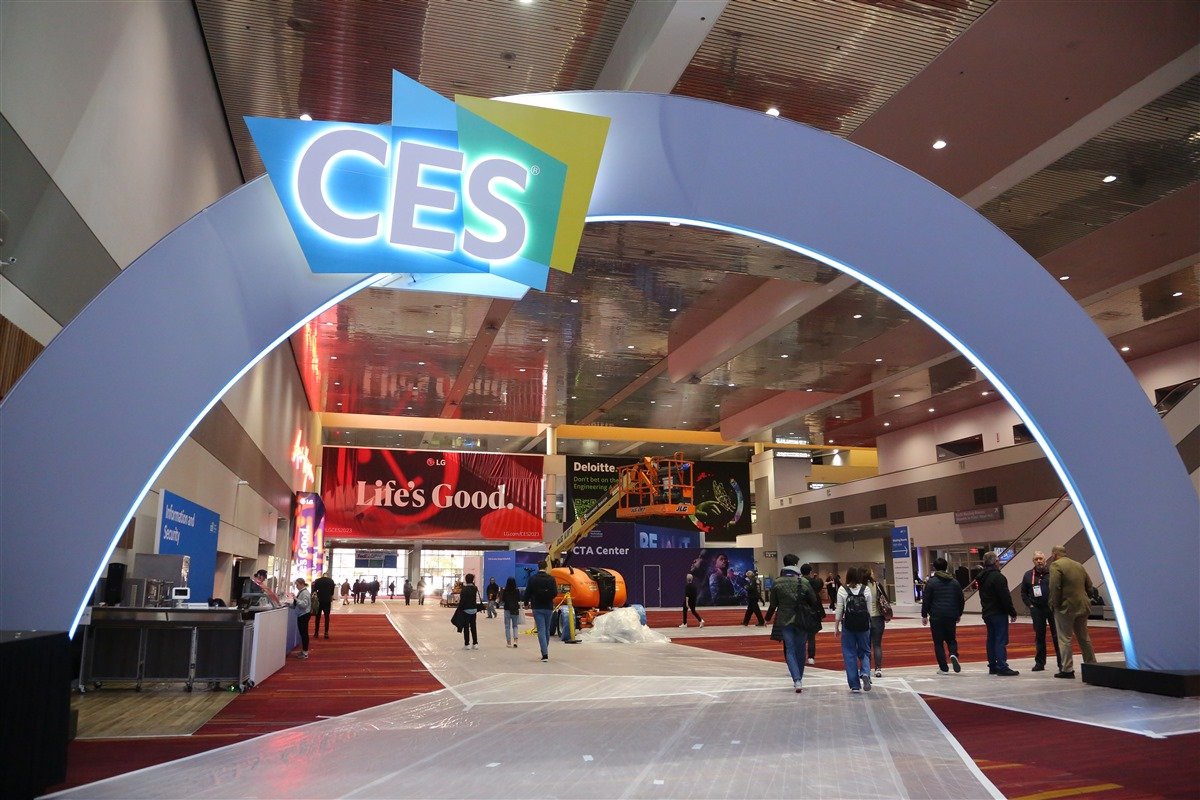CES 2023: less hype and more practical applications for metaverse technology
CES 2023. Credit: Consumer Technology Association.
Each year, CES generates a ton of technology news as startups and established global brands compete for headlines with their latest inventions. While it’s easy to get distracted by disco fridges and texting dogs, our focus was on cross reality (XR) innovations — unsurprisingly a key theme at this year’s CES — and it was good to see many practical applications of the technology coming out of the event.
Ater the hype of the past year, which has left many consumers confused or disinterested in the metaverse, CES provided many reasons for why we should care about this emerging technology. Here’s just a few examples…
IBM’s Weather Tool
Demo of IBM's weather tool, showing an example of how CVS could advertise within. Credit: Asa Hiken, AdAge
Hyper-localized weather forecasts are now the norm for most smartphone users, with instant alerts for incoming rain, severe weather emergency notifications, and more. IBM’s new weather tool further enhances this experience, by allowing users to hold their phones up to the sky and see XR simulations of incoming weather in their location. They will be able to see the movement of the sun, UV Intensity, or the progress of a developing storm, allowing people to be better prepared for weather events.
Within the XR view, brands will be able to make sure of advertising space to promote relevant products. CVS (A US pharmacy) is working with IBM to integrate sunscreen ads into the XR view when the UV Index is high, as has Campbell’s soup for when the weather is inclement.
XanderGlasses
Xander, a Boston-based startup, makes smart glasses that display real-time captions of in-person conversations for people with hearing loss. Built-in noise-cancelling microphones capture speech from conversations, which is then displayed on the lens. The speech-to-text technology is also built-in to the glasses, meaning they do not need a smartphone or wifi connection. Hearing loss is a problem all over the world, with 48m people struggling in America alone. This will only increase as the population ages and the glasses can help you see what others are saying, if you can’t hear what is being discussed, and feel more confident in conversations.
The company is launching a pilot program with the U.S. Veteran’s Administration next month to test out some of its technology.
holoride Retrofit Kit
holoride, a German startup providing XR in-vehicle entertainment, announced its retrofit solution to bring the technology to vehicles of any make, model, or year. Previously, only selected vehicle models could support the holoride platform, but now every car can be a holoride-ready vehicle. The compact device is roughly the size of a smart speaker, weighs less than 250g, and lives on a vehicle’s windshield. It plugs into the car via USB-C and lasts 14 hours on one charge. Up to two headsets can be connected to the device, which means two passengers can enjoy holoride experiences at the same time.
Speaking to Sam Sprigg at Auganix, Nils Wollny, CEO and co-founder of holoride said “The release of our holoride retrofit kicks off a new chapter in holoride’s journey. Our vision of delivering a manufacturer-agnostic entry point into the ‘Motorverse’ has finally arrived…Now, any vehicle can serve as your gateway into holoride’s adaptive virtual experiences where each new ride becomes the blueprint for your next immersive adventure.”
The Mocopi Motion Tracking System
Sony showcased its mobile motion capture system "mocopi," which allows creators to check their camerawork and character positions with VFX editing at the pre-production stage. The system consists of six tiny sensor bands worn on the users hands, feet, back, and head. A CG model is shown on the viewing monitor, which is synchronized in real-time with the movement of the user.
Mocopi makes it possible to easily create avatar videos and motion data that include whole-body movements indoors and outdoors, but as a motion input device, it is also possible to operate avatars in real-time with compatible services such as VRChat. Normally, video production using motion capture requires dedicated equipment and operators but mocapi frees VTubers and creators involved in movie and animation production from such constraints.
Credit: Sony/Mocopi
Fiat Metaverse Store
Stellantis (which owns brands such as Chrysler, Dodge and Jeep) joined forces with Microsoft to create a metaverse showroom for the Fiat 500, where customers will be able to discover, configure and even purchase a vehicle. The showroom can be accessed without a VR headset, and retains the human touch thanks to the Fiat Product Genius, an always available expert in creating a tailor-made journey.
Fiat’s objective is to reinvent the customer journey in the United States, bringing the buying experience straight into their homes.
Credit: Stellantis



